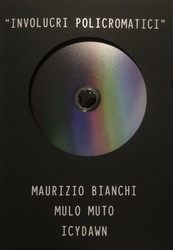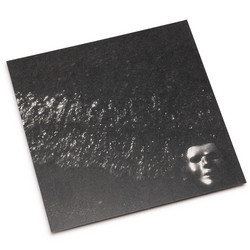Axebreaker
Bunker Archaeology Vol. 2: Concrete Tombs (Tape)
Concrete Tombs is the second volume in Axebreaker’s Bunker Archaeology dyad of cassettes, following vol. 1: Military Landscapes released on Outsider Art. Concrete Tombs is a work of anti-fascist power-electronics drawing upon cultural theorist Paul Virillio’s “Bunker Archaeology”, in which the architect and aesthetic philosopher writes about the ominous bunkers of the Third Reich which linger on France’s coasts as ruins.
Axebreaker melds field recordings of howling winds with a dirge of thick electronics; as the sea laps against the decaying shoreline, gurgling tones and an assault of shrieking spectral warnings emerge from the cavernous concrete blocks. As late-modernity’s ruins recede into the eroded coastline, a mechanical storm of heavy electronics is exhumed from the haunted shells of the quasi-religious beach alters. Squatting on the harsh strand, the grim fortifications coalesce with geological forms, and the cryptic architecture harbours a sinister cenotaph to the ubiquity of war’s machinery and the cartographies of its violence.
This receding Atlantikwall, wrecked upon the land’s edge, is a funerary moment of Nazi fascism. The now empty shells are ruins, sites whose physical and spiritual functions have collapsed and disintegrated through the passage of time. Axebreaker harnesses the ghostly qualities of indeterminacy that these haunted spaces possess, drawing attention to the fact that our experience of time and place is a palimpsest where past, present and future co-exist and intermingle. The traces of past violence is calcified in the ruins of these Nazi bunkers, and Concrete Tombs explores these disorienting crypts, wherein the distance between past and present becomes mixed and muddied.
Ruins carry the baggage of their disintegration, decay and collapse over time; they are material memorials, physical referents indicating that something that once was is no longer. But the monuments continue to speak, with ghostly voices, reminding those in the present of the omnipresence of fascism’s apparatus. The bunkers are physical evidence of past events, but simultaneously, also a warning against modern fascism’s mythical projection, that which postwar Italian fascist leader Giorgio Almirante would call ‘nostalgia for the future’. The concrete shells which weather the passage of time on Europe’s coastline are derelict structures — physical and political — which highlight processes of decay, both past, present, and future. Over 4 tracks, Axebreaker’s Concrete Tombs wades through this haunted void and hurls the ghosts which cling to its edges through a battery of noise and heavy electronics.
































